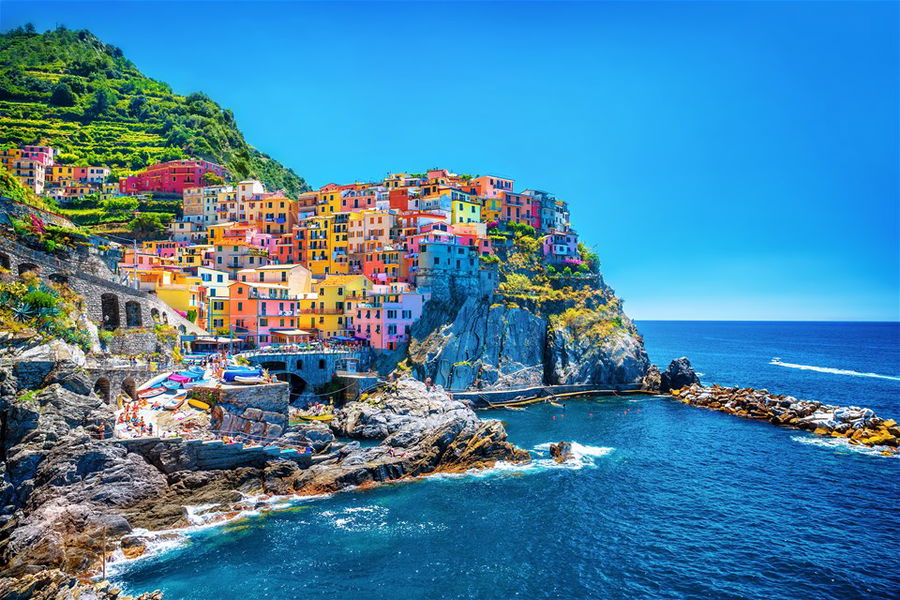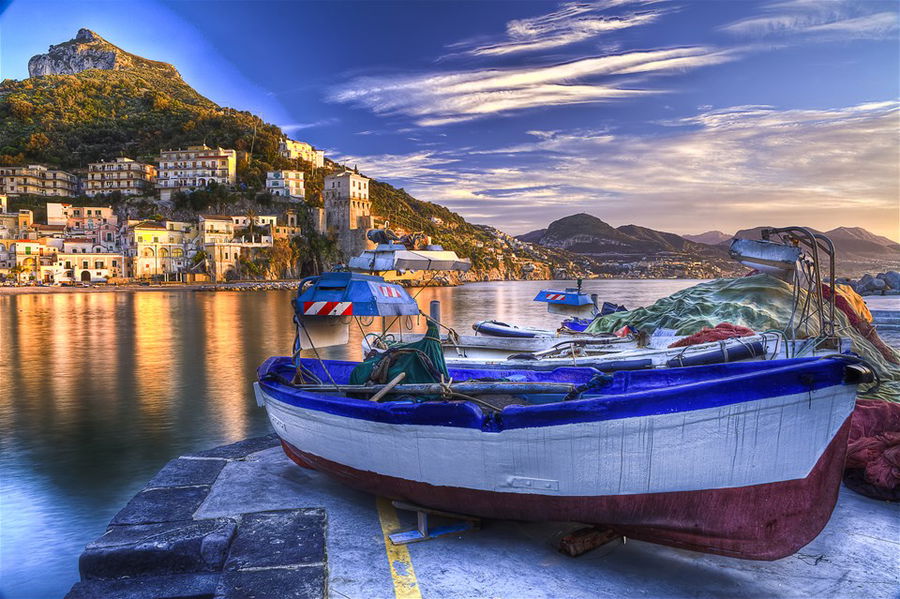Let’s explore the different seasons and their charms to help you decide on the best time to visit Italy.
Spring: March to May
Spring in Italy brings blooming flowers, mild temperatures and fewer crowds compared to the peak tourist seasons. It’s an ideal time to explore Italy’s cities, such as Rome, Florence, Venice and Milan, without battling long lines at major attractions.
In addition, you’ll witness Easter celebrations, colourful festivals and outdoor markets coming to life. Easter is one of Italy’s most important holidays, and you’ll see many religious processions over the weekend, particularly in Sicily and the south of the country.
Temperatures in Italy in the spring are moderate, and you’ll generally experience warm days with cool evenings. The springtime is considered by many as the best time to visit Italy.

Sardinia
Summer: June to August
Summer in Italy is synonymous with sunshine, festivals and lively beach scenes along the gorgeous coastlines. From the glamourous Amalfi Coast to picturesque Cinque Terre, summer offers endless opportunities for sunbathing, swimming and indulging in delicious gelato. However, be prepared for high temperatures and larger crowds, particularly in popular tourist destinations.
Summer is a great time to visit Italy for local events and festivals. The Ravello Festival on the Amalfi Coast is one of the most cherished events in the country and is a celebration of jazz, art shows, dance, photography and classical concerts. The Verona Opera Festival runs from June to August and puts on performances by some of the best musicians in Italy.

Cinque Terre
Autumn: September to November
As the summer crowds disperse, autumn brings cooler temperatures and vibrant foliage, making it a wonderful time to explore Italy’s countryside and vineyards. Autumn also marks the harvest season, offering visitors the chance to participate in grape stomping, wine tastings and truffle hunting experiences. It’s definitely the best time to visit Italy for foodies!
The region of Tuscany is particularly good in the Autumn and some villages hold festivals to celebrate the wine and freshly harvested food, such as the chestnut festival on Mount Amiata and the truffle festival in Volterra.
In addition, you’ll find fewer tourists and lower prices on accommodation in Italy in the autumn.
_960x960.jpg?width=900)
Tuscany
Winter: December to February
Winter transforms Italy into an enchanting wonderland, with festive decorations adorning the streets and the scent of roasted chestnuts filling the air. While some regions experience cold weather, others such as Sicily and the Amalfi Coast boast milder temperatures and sunny skies, making them an ideal winter escape.
Winter is also a good time to visit Italy’s world-renowned art museums and historic sites without the summer crowds, and in February you can witness the Venice Carnival, a spectacular celebration that embraces elaborate costumes, parades, parties, and masquerade balls.

Amalfi Coast
So when should I go?
Ultimately, the best time to visit Italy depends on your preferences and interests. Whether you’re seeking sunny beach days, cultural experiences or culinary delights, Italy offers something for everyone, no matter what the time of year. Whether you choose to bask in springs blooms, savour the summer sunshine, enjoy the autumnal colours or embrace the winter festivities, one thing is certain; Italy will leave you enchanted, no matter what the season.

Rome
For more inspiration take a look at our Italy Holidays pages.

%2Fshelleyp%2F%24FILE%2Fshelleyp.jpg&w=256&q=75)
